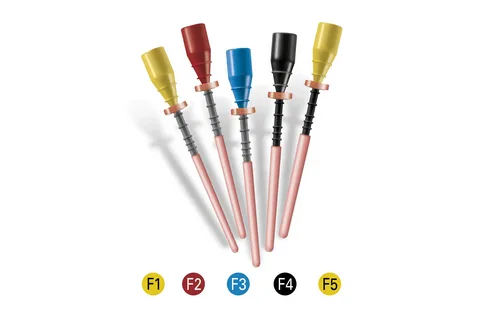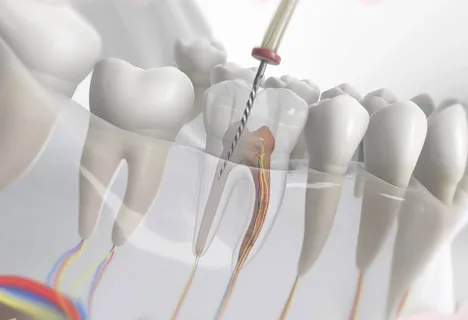Machine instruments for root canal treatment
Machine translation
Original article is written in RU language (link to read it).
The history of the development and creation of machine endodontic instruments made of nickel-titanium alloy for root canal treatment today is no more than 30 years. At the same time, dozens of companies already offer their sets of nickel-titanium rotary machine instruments on the dental instruments market.
About the mechanical treatment of the canal with a new tool made of NiTi alloy at the Endodontics webinar using NITI tools .
These instruments significantly simplify the most labor-intensive stage of endodontic treatment – mechanical treatment of curved tooth canals. This is made possible by the superior flexibility inherent in nickel titanium rotary tools.
Ben Johnson and John McSpadden are rightfully considered the founders of the first methods of working with nickel-titanium endodontic instruments. The World Dental Association approved the use of rotary instruments in dental practice in 1996. Today it is the gold standard of endodontic treatment.
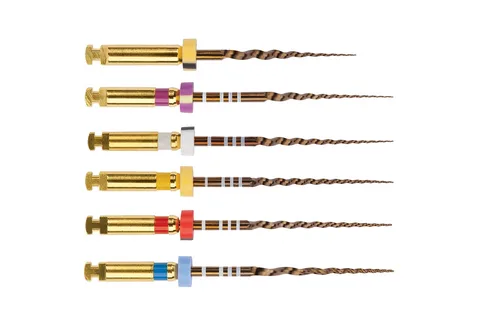
Figure 1. Machine endodontic instruments.
Working conditions
To achieve safe and effective root canal rotation of nickel titanium files, it is important to be aware of certain conditions required for this rotation. For high-quality processing of the canal and to prevent file breakage during work, you need to take into account that nickel-titanium files have certain physical and mechanical characteristics, the main of which are:
torque is the maximum torque indicator;
the optimal value of the recommended rotation speed.
Precise information about these parameters is always indicated in the operating instructions of either the manufacturer of the rotating files or the manufacturer of the endodontic motors.
Special endomotors and endo-tips must ensure that the recommended rotation speed of the machine tool is maintained against the background of the optimal torque force, or stop rotation when the pressure on the canal walls of the tool is exceeded.
Classification
Depending on the method of imparting movement to a machine tool, all endomotors and tips for machining can be divided into the following groups:
full rotation,
reciprocal, or reciprocating rotation,
reciprocating.
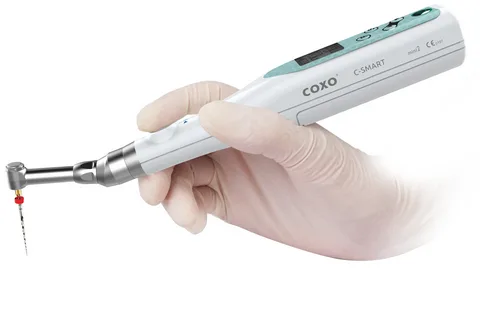
Figure 2. Endodontic handpiece.
To reduce the risk of fracture of endodontic instruments before the creation of tapers and profiles, a technique of machine reciprocating and reciprocal rotation limited to 90° was proposed. This made it possible to significantly reduce the pressure on the curved file during operation and did not interfere with longitudinal forward/backward movements in the canal.
When using special endomotors, there is no need to remember digital parameters - the electronics of the endodontic motor independently monitor the torque and maintain the recommended rotation speed.
Endodontic rotary instruments
Today, there are about 30 different systems of rotating nickel-titanium instruments on the dental instrument market. These tools are equipped with a screw thread, which can have a single or several cutting curls. Some companies produce tools that have reduced aggressiveness; this is achieved by flattening the cutting edges.
The appearance of most of the presented instruments differs to a greater or lesser extent, but among them two main designs can be distinguished:
files equipped with sharp cutting edges;
files with reduced aggressiveness, the cutting edges of which are flat.
The presence of radial pads on the file makes the mechanical processing of the canal a little longer, relatively slows down the process, but guarantees safety. And instruments that do not have radial platforms cut dentin faster and more aggressively, which often causes preparation errors.
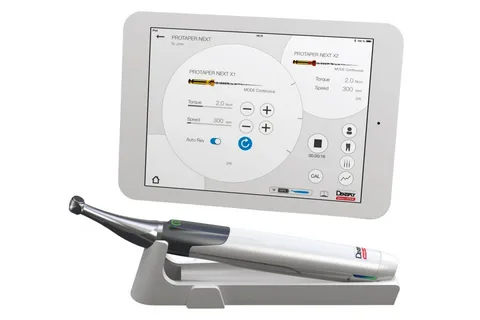
Figure 3. X-Smart.
First generation endodontic nickel titanium rotary instruments
Their production was based on cutting nickel-titanium wire, which was distinguished by a safe tip, flat radial edges, increased taper, and the cutting edges were located at right angles. Representatives of the first generation: GT Rotary File, ProFile.
Among the main advantages of the first generation files was the safe tip of the instrument, which served to prevent perforation of the canal wall and did not allow the formation of steps. However, they had low cutting ability, left behind a thick smeared layer on the canal walls, it was difficult to remove it, so there were difficulties with disinfection of the dentinal tubules.
The main disadvantage, characteristic of both generations, was the difficulty of assessing tool wear; it was often visually impossible to determine minor deformations and metal fatigue, which led to frequent tool breakages with a relatively small load in the root canal.

Figure 4. Rotary nickel-titanium instrument.
Second generation endodontic nickel titanium rotary instruments
Files of this generation were made by cutting wire, but these tools had aggressive cutting edges, a semi-aggressive tip and a variable taper. Representatives of this generation: Race, FlexMaster, K3, HeroShaper, HERO 642, Mtwo, ProTaper.
The tools of each company were distinguished by their unique characteristics, which determined the features of their use for mechanical processing of the canal:
cross-sectional shape;
taper;
spiral type;
cutting angle size;
step between blades.
Third generation endodontic nickel titanium rotary instruments
They were made from nickel-titanium by twisting a heated wire and then cooling it. Representatives of this generation: BioRace, Twisted File.
Features of third generation files:
high cutting characteristics;
non-aggressive tips;
under excessive load they did not break, but began to unwind;
ease of assessing tool wear: if the wire twists against the spiral, this is a signal to dispose of the file.
Fourth generation endodontic nickel titanium rotary instruments
Reciprocation is a repeated up and down movement. Representatives of this generation: M4, Endo Express and Endo-Eze are systems in which the angle of clockwise file rotation corresponds to that of counterclockwise rotation.
Fifth generation endodontic nickel-titanium rotary instruments
The peculiarity of these instruments was a shifted center of gravity and rotation. This design feature contributes to the emergence of a mechanical wave moving throughout the instrument. Shifting the center of gravity significantly reduces the friction between the instrument and dentin, facilitates the removal of sawdust, and increases the flexibility of the instrument. Representatives of this generation: Revo-S, One Shape and ProTaper Next.
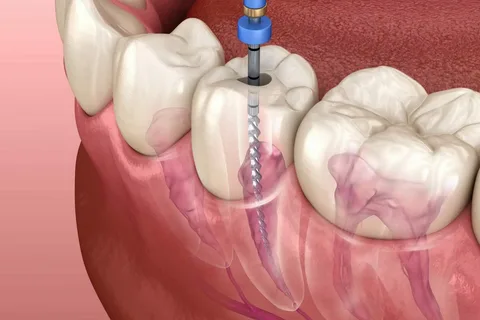
Figure 5. Working with an endomotor.
Principle of operation
When working with nickel-titanium rotary tools, the following principles must be adhered to:
Provide straight access without overhanging edges to the mouths of the canals.
Set and fix the working length.
It is important to monitor the tool rotation speed and torque. When working with endodontic handpieces, it is necessary to strictly follow the manufacturer's recommendations, observing the torque and speed indicators.
Movement in the instrument channel, its sliding along the channel is accompanied by minimal apical pressure. The following test will allow you to evaluate the force of pressure in practice: rest the tip of the file on a hard surface so that it bends slightly; this force will be enough to move the file through the canal.
Duration of the working cycle. The duration of one cycle of continuous movement in the tool channel cannot be more than 10 seconds. If the file is stuck in the canal, trying to move it is unacceptable since this will inevitably lead to damage to the instrument.
Using a binocular loupe to optically monitor instrument deformation, it is recommended to evaluate files before and after the work cycle.
Creating a carpet is a prerequisite, without which it is impossible to start working with nickel-titanium rotating tools. Creating a carpet path involves passing the root canal along its entire working length with a K-reamer or any hand K-file No. 10-15.
A prerequisite for working with rotating instruments is intensive and frequent rinsing of the canal.
Before starting to work with patients, the doctor must undergo training and master practical skills on extracted teeth or phantoms. Only then is clinical application of these tools possible.
All the subtleties and nuances of endodontic treatment from experts in the online course Endodontics 3.0 .


